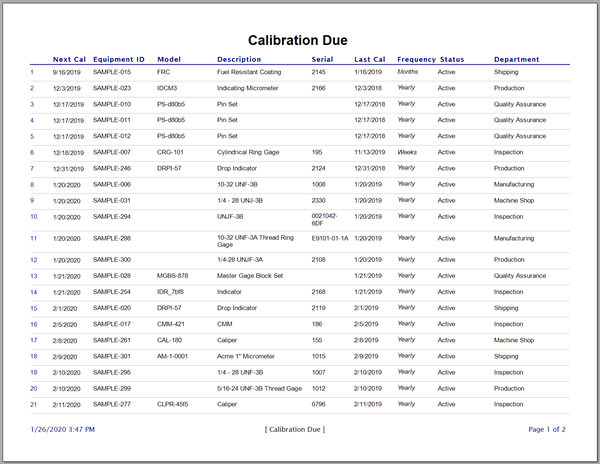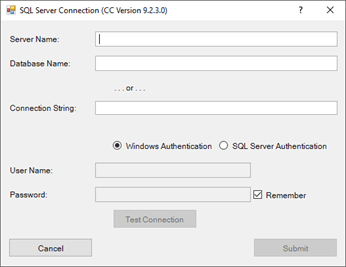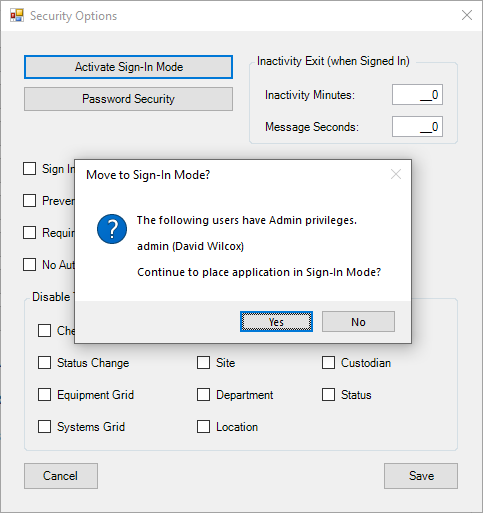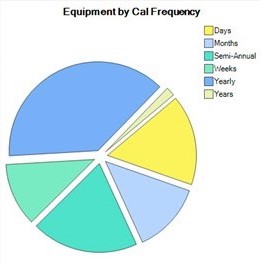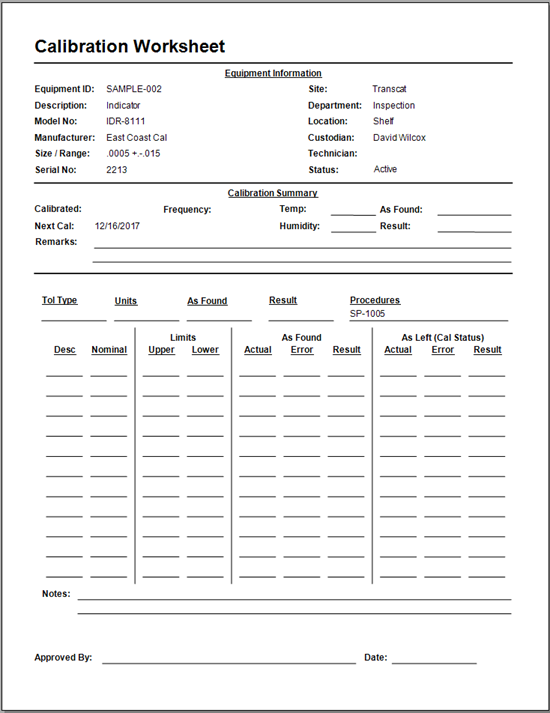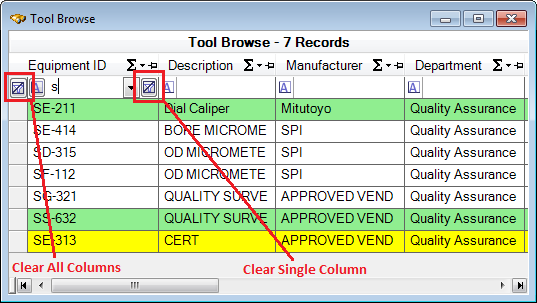Contact Crimping & Lugging Tools Calibration
Purpose
This procedure describes the calibration of Crimping/Lugging tools both hand and power operated. The Crimping/Lugging tools both hand and power operated is used to produce solderless electrical connections.
Scope
This general procedure shall be used in the absence of any specific calibration procedure for contact crimping and lugging tools.
Procedure
Preliminary Instructions
Crimp combinations shall be identified by part number, wire size, type, coating, terminal color, and terminal name. For wire preparation, strip insulation one (1 1/2") from wire end with stripped portion tinned for better gripping effect by Tensile Tester jaws. Strip other end of wire (3/8") and leave insulation on the wire to prevent wire fraying. Overall length of test samples shall not exceed four inches but preferred length is (3 1/2").
- Read this entire procedure before beginning the calibration.
- Calibration shall be performed in an environment that conforms to Manufacturer Specifications.
- The contact crimping and/or lugging tool will hereafter be referred to as the Instrument Under Test (IUT).
- Verify that the IUT is clean.
- Visually examine the IUT for any condition that could cause errors in the calibration.
- Check if IUT operates properly, that the ratchet release operates, and that dies/indentor close properly.
- If any of the requirements cannot be met, refer to the applicable manufacturer manual.
- If a malfunction occurs or a defect is observed while calibration is in progress, the calibration shall be discontinued and necessary corrective action taken; if corrective action affects a measurement function previously calibrated, the function shall be recalibrated before the remainder of the procedure implemented.
Reference Material
Applicable Manufacturers Manual or Brochures.
Specifications
The specifications of the IUT are determined by the applicable manufacturer's documentation. If the manufacturer's documentation is not available, then the specifications identified in this procedure are used.
Equipment Required
The Standards listed below have been selected on the bases of their higher accuracy level when compared to the unit under test. Equivalent Standards must be equal to or better than the Minimum-Use-Specification.
Minimum-Use-Specifications for Standards listed are 1/4 the accuracy required by the IUT.
Table 1
| Standard Used | Range | Accuracy |
|---|---|---|
| Pin Gage Set | 0.006 to 0.060 inch | + 0.0002 - 0.0000 |
| Pin Gage Set | 0.061 to 0.250 inch | + 0.0002 - 0.0000 |
| Spring Tensile Tester | 1 inch | 0.25 |
| Spring Force Gage | +/- 1% of Full Scale |
Detailed Procedure
For checking Crimper/Lugger hand tools
- Calibration of the IUT consists of inserting a GO and NOGO gage between indentors of the IUT when the indentors are in the fully closed position.
- Using the appropriate GO and NOGO gages, determine the GO and NOGO pin sizes for the applicable application.
- Grip handle of the IUT to a fully closed position and insert a GO gage between the indentors of the IUT. GO gage should pass freely through the opening.
- Without releasing the handle of the IUT try to insert the NOGO gage between the indentors of the IUT. NOGO gage must not enter between the indentors of the IUT.
- Calibration of the IUT consists of inserting a GO and NOGO gage between indentors of the IUT when the indentors are in the fully closed position
- Using the appropriate GO and NOGO gages, determine the GO and NOGO pin sizes for the applicable application.
- Apply power to the IUT to obtain a fully closed position of the indentor and insert a GO gage between the indentors of the IUT. GO gage should pass freely through the opening.
- Without releasing power to the IUT try to insert the NOGO gage between the indentors of the IUT. NOGO gage must not enter between the indentors of the IUT.
-
The Tool handle boot will be of a specific color to designate the wire size to be
crimped. Refer to Table 2 for appropriate color-coding.
Table 2
Tool Handle Color Wire Size Yellow 12 Ga/18 Ga/26 Ga Blue 16 Ga/24 Ga Green 14 Ga/22 Ga Red 20 Ga Brown 10 Ga
-
Table #2 determine the minimum tensile values for the wire to be crimped.
NOTE: When Tensile testing crimped samples containing two or more wire sizes, the smallest wire size shall be Tensile tested.
- Visually examine wire samples for cuts, nicks and or damage before using.
- Insert the test samples (3ea) in the die or indentor of the IUT and crimp each sample.
- Visually examine samples for peeled metal, misplaced crimps, sharp edges, cuts and burrs.
- Verify that the retention clips or locking devices are operational and that the conductor is visible in the inspection hole when inspection hole is provided.
- Place tinned wire end of the test sample in the movable jaws of the Tensile tester, set lock release on Force gage to "OFF", dial to zero and set lock release to "ON" position.
- Operate Tensile tester to pull test samples until wire and terminal separate. If the test equipment being used does not allow wire sample breakage, the wire sample must be pulled to 120% of tensile strength.
- Repeat steps 7 and 8 for each remaining test samples.
- Assure that the Tool combination to be Qualified is an acceptable Crimp combination from manufacturers manuals or Engineering specifications.
-
Perform the above 'TENSILE TEST' 10 samples.
Table 3
Wire Size Contacts/Lugs Other Type Materials 30 1.8 28 4 26 6 7 24 8 10 22 12 15 20 20 19 18 40 38 16 50 50 14 70 70 12 110 110 10 150 150 8 225 225 6 300 300 4 400 400 2 550 550 1 650 650 0 700 700 00 750 750 000 825 825 0000 875 825 - Tensile Tester speed shall be between 0.75 and 1.25"/min
- For Tensile Tester values of wire sizes other than shown, use 60% minimum strength of wire as the minimum Tensile value. For shield and pigtail type terminations, use the minimum value of 15 lbs., or 60% of the minimum strength of the wire, whichever is lower.
- Values of Table 3 include connections crimped to the bare wire only, and do not include insulation Grip Retention.
Reason for Reissue
Revision A - First Release


